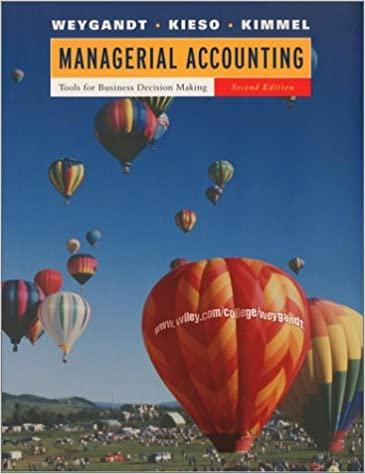David Chambers Industries has sales in 2002 of ($5,250,000) (656,250 units) and gross profit of ($1,587,500). Management
Question:
David Chambers Industries has sales in 2002 of \($5,250,000\) (656,250 units) and gross profit of \($1,587,500\). Management is considering two alternative budget plans to increase its gross profit in 2003.
Plan A would increase the selling price per unit from \($8.00\) to \($8.60\). Sales volume would decrease by 10% from its 2002 level. Plan B would decrease the selling price per unit by 5%. The marketing department expects that the sales volume would increase by 100,000 units.
At the end of 2002, Chambers has 75,000 units on hand. If Plan A is accepted, the 2003 ending inventory should be equal to 87,500 units. If Plan B is accepted, the ending inventoiy should be equal to 100,000 units. Each unit produced will cost \($2.00\) in direct materials, \($1.50\) in direct labor, and \($0.50\) in variable overhead. The fixed overhead for 2003 should be $965,000.
Instructions
(a) Prepare a sales budget for 2003 under (1) Plan A and (2) Plan B.
(b) Prepare a production budget for 2003 under (1) Plan A and (2) Plan B.
(c) Compute the cost per unit under (1) Plan A and (2) Plan B. Explain why the cost per unit is different for each of the two plans. (Round to two decimals.)
(d) Which plan should be accepted? (Hhit: Compute the gross profit under each plan.)
Step by Step Answer:

Managerial Accounting Tools For Business Decision Making
ISBN: 9780471413653
2nd Canadian Edition
Authors: Jerry J. Weygandt, Paul D. Kimmel, Donald E. Kieso, Ibrahim M. Aly





